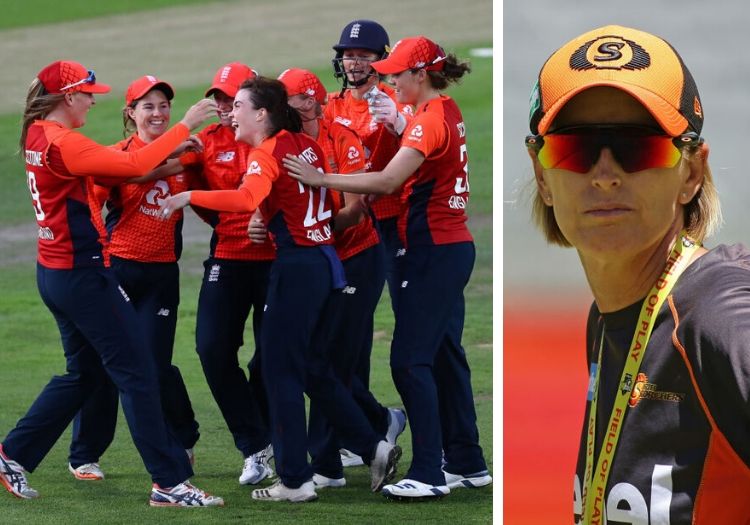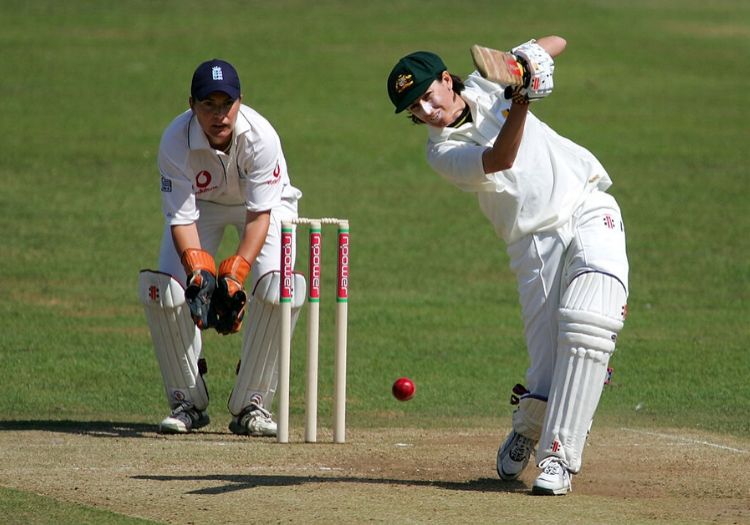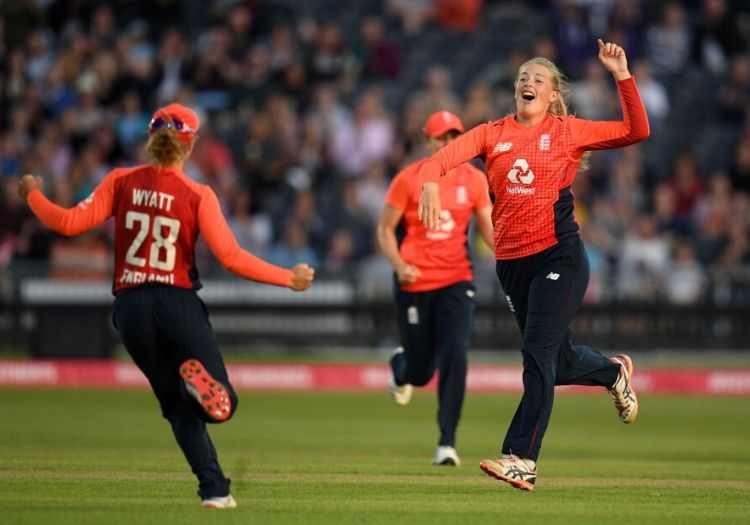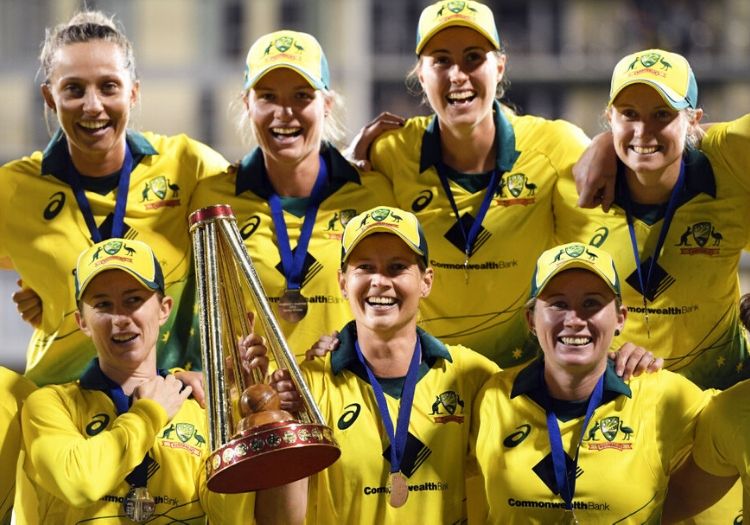SAM MORSHEAD AT LORD'S: In the dressing room, boardroom and coach's office times are a-changing. As dawns go, this one really does come with a full blackbird chorus

For England’s women, a period of transition awaits.
In the dressing room, times are a-changing as the old guard, responsible for the on-field moments which have inspired a generation, step aside one by one.
In the boardroom, a plan has been conceived and implemented - and substantial funding found - to accelerate the growth of the sport and, most pertinently, keep pace with Australia.
And in the coach’s office, a new team has been assembled, with an Australian at its head.
As dawns go, this one really does come with a full blackbird chorus.
There is good reason, then, why England have been at pains to paint Lisa Keightley’s arrival as a “new era” for the women’s team ahead of her first major test, the T20 World Cup in her native country.
Keightley, the 48-year-old former Aussie batsman, picks up the reins from Mark Robinson with the medium and long term in much greater focus than the here and now.
It will, after all, take time for the ECB’s women’s and girls’ strategy - a project several years in the making, which redefines the boundaries for academy programmes in England and Wales, and the pathways to the elite game - to bed in.

Lisa Keightley in action during her playing days
And a team like Australia - a runaway train on an unprecedented 18-match winning streak in ODI cricket and with just three T20I defeats to their name in two years - are not caught overnight.
But that did not stop Keightley from declaring, on her first formal appearance in front of the English media, that the World Cup is winnable, that the Australians are beatable, and that it is all possible under her watch.
“I'm really excited with the group that we have got,” said Keightley. “They've played in a lot of finals, semi-finals and World Cups out here, so I think the core group of players can play on the big stage and they can play competition cricket, and that's what World Cups are, aren't they?
“You need to play well and get a bit of momentum, so I'm really excited with the group that we've got.
“I think we've got a lot of options. I think we've covered most bases really well, and we've got a lot of variety and I'm looking forward to seeing what matchups we can get and play attacking positive cricket, which I think you need to do against big teams.”
Often we hear the phrase “attacking cricket” trotted out in situations like this - new coaches trying to make a positive first impression. Too often such words are hollow. So what does it actually mean to England’s new head coach?
SIGN UP TO OUR NEWSLETTER
Credit where it’s due, we got an answer.
“I want us to bowl teams out. I want us to put pressure back on the bowlers as soon as we can, and put teams under pressure as early as we can,” she said.
“So what that looks like in different teams, that could look different at different times. But I want us to be positive, I want them to play with confidence and freedom because they know their game, they know their strengths and, under pressure, I'd hope that they would go to their strengths.”
It was confidence and freedom which so helped England on their journey to becoming world champions two and a half years ago. July 23, 2017 is a landmark date in the women’s game in this country, but it was also a tipping point for a major rival.
Australia - supported by an established and coordinated domestic programme, and bolstered 10-fold by the high-quality and superbly marketed WBBL - have become the global frontrunners. Reining them back in will be no easy task, particularly as England’s squad evolves following the retirements of Sarah Taylor, Laura Marsh, Jenny Gunn and Dani Hazell in recent months.
There are of course some lasting constants - Heather Knight’s captaincy, the combative strokeplay of Tammy Beaumont and Danni Wyatt, and Katherine Brunt’s bloody-minded brilliance among others - but of the 15-strong squad which won in 2017, nine will travel to Australia. There are six changes from the party which came second to the Aussies at the last T20 tournament, in the Caribbean at the end of 2018, as well.
Still, Keightley believes in the players she has inherited.

England take part in the T20 World Cup next month
“I wouldn't have gone for the role if I didn't think we had a chance to win and we didn't have talented players, so I'm really excited with the group that we have got,” she said.
England name their squad for the World Cup on Friday, and those who travel Down Under on January 22 - ahead of a warm-up tri series against Australia and India - are not in for an easy ride.
Certainly, no one will be getting a national cap for free from their new boss.
“I think it should be hard to get into a team. I don't want to give away caps,” Keightley said.
“I think people need to earn it and that gives them confidence when they've earned the cap. It gives them confidence that they're playing well and in good form.”
Keightley is England’s first full-time female head coach, but by no means the first woman to lead the side - a point she was keen to make in her introductory press conference at Lord’s on Thursday. She came through a competitive recruitment process, seeing off a number of male candidates for the job, with director of England women’s cricket, Clare Connor, describing her as the “best… by some distance”.
A glittering playing career - Keightley was the first woman to score a century at Lord’s and played 92 times for country - has given way to a formidable stint as a coach, most recently in the WBBL, where she took Perth Scorchers to the final in both 2017 and 2018.
"I'm planning to be in the final - I don't know about you guys - and I know the players are planning to be in the final"
What’s more, she already knows a number of England’s younger players thanks to her time heading the academy - a massively useful attribute at a time when a number of stalwarts need to be replaced for the long term.
With the departures of Taylor, Hazell and Marsh, England are blessed with already identifiable successors in the shape of wicketkeeper Amy Jones and perhaps the world’s best spinner, Sophie Ecclestone.
It is the seam department where the next generation must now stand up.
It would be a surprise, for example, to see Brunt go on much beyond this year’s World Cup. The Yorkshire allrounder may be as resilient as they come - the daughter of a miner, whose experience of being bullied as a child gave her a kevlar shell - but she will be 35 in July, and there are women more than a decade younger biting at her heels.
Of those, Freya Davies - the Sussex seamer - is the natural successor, both to Brunt and Gunn. Tall, quick and still a relative unknown on the international arena, with just five T20I appearances to her name, Davies was the standout bowler in the final edition of the Kia Super League last year.
Keightley expects the wider game to know her name by the middle of March.
“A lot of people don't know what Freya Davies does, so going into World Cups or anything like that it's quite nice to have a few players that are unknown, and teams aren't sure what they do,” the head coach said.

Australia are the world's best women's side
“You have to take your time and have a look, don't you, and in T20 you can't do that for too long, so if that can be a plus for us.
“Freya's done it in [the KSL] and she's bowled to a lot of players that play international cricket and so she can do it there.”
A World Cup within two months of taking a new job is hardly the honeymoon period many coaches might expect, or even crave, but Keightley isn’t daunted.
“I'm planning to be in the final - I don't know about you guys - and I know the players are planning to be in the final,” she said.
“I don't know what it is about me but I've never started at a perfect time. I think in all my roles throughout cricket, sometimes they're not perfect. When I was starting with the Aussie girls and New South Wales, those were probably the only two roles that I've had with a bit of time [before the tournament].
“Starting in Western Australia and with the Strikers I went in two weeks before the main competition, and I suppose with a bit of practice with the academy girls, you never have the same group of players, so working at speed is something that I'm used to.
“Obviously, internationally it's another step up, but I think I'm pretty fortunate. I know the women's game really well, and I know a lot of teams really well, and I know the England players pretty well. So I think that makes it easier, though I'm sure there'll be challenges along the way.”